Genre: Action Developer: Psygnosis Ltd. Publisher: Sony Imagesoft Player: 1 Released: 1993
In 1992 film director Francis Ford Coppola released his take on Bram Stoker’s novel Dracula which was an instant success in movie theaters around the globe. Naturally, a movie licensed game was in order and titles loosely based on the film were unleashed across most of the home consoles and hand held systems. Typically, this is a sure fire recipe for disaster; however this time around things aren’t as terrible as other licensed games that have come before and after.
Dracula on the Genesis is an action/platformer that stars the novel and film’s hero Jonathan Harker. Players must chase after the Count and his minions through his home turf of Transylvania, back to Harker’s home country of England, and then to Transylvania again for the final confrontation across seven different levels. Harker is assisted along the way by Professor Van Helsing, whom he must find in a majority of the game’s stages via an arrow at the top of the screen which points to Van Helsing’s general direction. Once located, the good professor speaks to Harker through comic book-style thought balloons to let him know which of the five missile weapons Harker can pick up to help defeat that stage’s boss enemy. You can use a boomerang, pistol, stakes, dynamite, and rifle. Oddly enough, the rifle is the one weapon that Van Helsing never asks you to find. These weapons have limited ammunition but inflict more damage than the regular sword that Harker is armed with and will destroy bosses much faster than hacking away at them. Once you’ve acquired the right weapon the location arrow points to the exit door where you’ll head to the next stage and the eventual boss battle.
That’s Dracula in a nutshell. As you search each level for Professor Van Helsing, the right missile weapon, and the stage exit, you’ll be taking on the usual staple of horror themed enemies such as rats, spiders, wolves, ghosts, zombies, skeletons, scorpions, crazed asylum inmates, armored knights, and Dracula’s vampire brides. The levels tend to be on the short side and shouldn’t take you more than a few minutes to complete. You’ll have to do some basic platforming in a few stages, but these sections are easy thanks to the precision controls. The game uses a standard three-button setup with the first button to fire the missile weapon, the second to attack with the sword, and the third for jumping. The developers did include the ability to hold down the attack button, which causes Harker to draw his sword but not swing it until you release the button. I’m not sure why they included this feature, as your best tactic in every level is to spam the attack button as quickly as possible to eliminate enemies. One of the problems with this game is that most enemies aren’t knocked back or stopped when they’re hit by your sword. They’ll keep charging at you and will inflict damage if they aren’t destroyed immediately. This is very apparent in the later stages when you have multiple enemies who require several hits to kill either ganging up or attacking in a line. You may take out the first one in line but the second will close in to hit you before you can take him out. You’ll probably lose a few lives this way when things get really heavy towards the end of the game. Enemies also respawn as soon as you leave the screen so you’ll have to watch where you jump or drop down from platforms as there may be someone waiting for you as you land.
Another issue is the stupidly easy boss battles. If you have the right missile weapon, they aren’t much of a challenge. If you didn’t find the weapon or lost it due to using one of the game’s two continues, your sword is fully capable of getting the job done. All bosses have one attack pattern, so once you’ve figured that out taking them down is a breeze. In some cases you can find a spot to stand or crouch from which to attack and the boss won’t be able to damage you. As a boss, Dracula appears in several different forms, such as the carriage driver who drives Harker to the castle, his elderly form, a large wolf, a humanoid bat, and his final form of the knight in red heavy armor and a sword. Some of the other bosses include Dracula’s three vampire brides from Transylvania, a fire breathing dragon, the deranged asylum inmate Renfield who sports a straitjacket and spits spiders, and Lucy Westenra, the woman Dracula seduces and transforms into a vampire while in England.
Graphically speaking, Dracula gets the job done without going the extra mile. The stages are well-designed and use a variety of bright colors instead of the darker, drab colors that you’d expect in a horror title. Some have secret areas where you can pick up some extra lives or a healing potion that will restore your life completely. There aren’t any scaling or special effects, although there is a limited use of parallax scrolling in those stages that contain windows. You’ll be traveling through rustic cottages, Dracula’s castle, and the dungeons below, eerie forests, graveyards, haunted tombs, a monastery, an abbey, and estate before heading back to the castle again to ascend through a gauntlet of flying arrow traps before your last meeting with the count.
In the audio department you have a collection of average sound effects and a few voice samples for wolf cries and some screams from the male and female inmates. Again, nothing all that outstanding but just enough to the get the job done. The soundtrack is a highlight of the game with a number of great tunes to accentuate the horror element throughout the stages. Some of my favorites are the “Escape from Dracula’s Castle,” the “Hillebrand Estate” and “Carfax Abbey.” The only track which feels completely out of place is the cutesy one in the first stage where you travel around a cabin. Other than that, everything else fits perfectly.
For game options you have three difficulties: trainer, which only allows you to play a handful of levels, medium, which gives you the full game, and hard, which also gives you the full game, a dagger as a starting weapon and limits you to just three health vials. Thankfully, you can acquire the sword again in the first few stages, as the dagger is almost useless due to its short range. You can also adjust how many lives and health vials your character has and setup your preferred control scheme.
So, the final verdict. Dracula on the Genesis is a competent action platformer that doesn’t have any outstanding qualities that will grab your attention. It does just enough to satisfy the requirements for the genre, and that’s it which is different from most movie licensed titles that are rushed out in a poor state to capitalize on the film’s popularity (or lack thereof). It’s no Castlevania or Master of Darkness to be sure, but it should keep you entertained for the 40-45 minutes it takes to complete.
SCORE: 5 out of 10

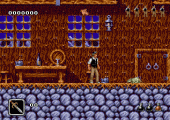
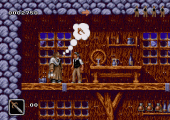
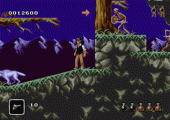
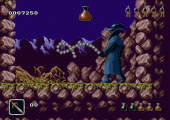
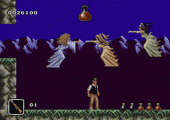
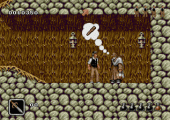
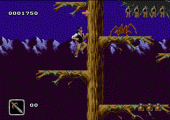
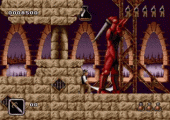

I didn’t think much to this game really. Genesis/Mega Drive was swamped with platformer’s, mostly average, and I don’t rank this as even memorable. Its a pity as I personally enjoy the subject matter, but atleast to make up for it, Sega’s only Castlevania on this console happened to be also one of the best ever.